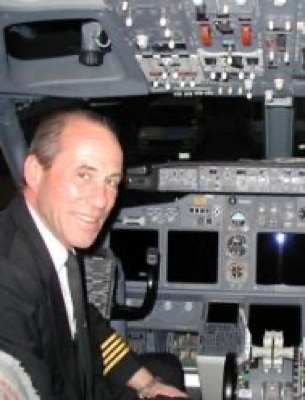B737NG Interactive System Panels
Aft Overhead Panel
Leading Edge Devices
IRS ISDU and MSU
Audio Control Panel
Engine Panel
Oxygen Panel
Flight Recorder
Mach Warning
Stall Warning
PSEU
Overhead Gear Lights
Great review for :
FAA Orals
Proficiency Checks
Systems Overview
Transition to the B737NG
Features:
Interactive Pictorial Panel
Presentations
Over 1000 Oral Exam
Questions and Answers
Over 500 Questions in the
online Multiple Choice
Knowledge Exercises
Take Notes for Later Review
Online Updates and Quizzes
Forward Overhead Panel
Flight Control Panel
Navigation and Displays Panel
Fuel Panel
AC and DC Metering Panel
Generator Drive and Standby Power Panel
Ground Power and Bus Switching Panel
APU
Miscellaneous Forward Overhead Panels
Window Heat Panel
Probe Heat Panel
Wing and Engine Anti-Ice Panel
Hydraulic Panel
Door Warning Panel
CVR
Air Conditioning and Pressurization Panels
Glare Shield
Master Caution System
EFIS Control Panel
Mode Control Panel
Yaw Damper
Standby Instruments
N1 Set
Speed Ref Set
Auto Brake
Flap Indicator
Gear
Forward Panels
Left Forward Captain
Right Forward First Officer
Center Forward
Control Stand
Manual and Electric Trim
Speed Brakes
Parking Brake System
Thrust Levers
Reverse Thrust
Start Levers
Auto Throttles and TO / GA
Flaps
Gear Warnings and Cutout
General System Review Modules
Aircraft General 700/800/900
Air Systems 700/800/900
Bleed Air System
Air Conditioning Packs
Air Distribution
Pressurization
Electrical System
Bus Switching
Bus Transfer
Standby Power
Engines
Aft Electronic Panel
Master Fire Control
Cargo Fire Control
Transponder and TCAS
Radio Panels COM and NAV
Rudder and Aileron Trim
Miscellaneous Lights and Systems
Flight Controls
Hydraulic System

The B737 NG Systems Review Program really had its beginnings in Africa some 30 years ago. I went there to fly a
contract on the venerable old DC-6 in 1978 and we all had to get our Nigerian ATP licences before we could do
any flying within the country. Since I was the most junior of our bunch, the gang elected me to be the guinea pig
and sent me on my way to the examiners "office" for the written test and oral exam. This marked two milestones in
my life and also my flying career. It was the first time I ever won an election and the first time I FAILED a written or
oral exam. This was one TOUGH test and oral. I remember one of the questions to this day. Through what degree
of arc must the navigation lights be visible ? I'm lucky to remember which color goes on which wing ! After
recovering from the humiliation and having briefed the guys on the ordeal, we got serious and sat around throwing
system questions and answers to each other for a week or so. It was amazing how much I learned and retained
using the Q and A format. Every new airplane I had to study would start with a mad scramble, usually fruitless, to
find a Q and A sheet of some kind.
Around 1981 or so, being a typical pilot in love with the latest gadgets, I bought the first Apple computer when it
came on the market. I got this thing home and when it was all set up and turned on, it didn't do anything but sit
there and blink
and blink
and blink.
I expected it to give me all the information I would ever need or want to have and it just sat there and blinked. You need software ? What's
software ? So I learned how to program. This was the crude beginning of my personal CBT or computer based training efforts. Over the years I
would occasionally take all the bits of paper and yellow pads with my airplane system notes and make up computer flash cards to study before a
check ride. After my level of "expertise" grew, having finally figured out what software was, and calling on my BA (Before Aviation) occupation
skills as a graphic print and layout "artist", I added some rudimentary schematics and graphics to what eventually became a set of power point
slides. Being somewhat lackadaisical in my study habits, the object of this whole excercise was to study as little but as effectively as possible.
Eventually I began sharing this hodge podge of information with other pilots who seemed to find it useful.
After retiring from Continental in 2005, I spent some time learning some new programming skills and with the encouragement of a friend and
fellow 737 Captain, the project started to take shape. So, in effect, it's taken about 30 years to write B737 NG Systems Review. Some of the
research I've done as an instructor on learning and knowledge retention certainly backs up the concepts behind this program and what's worked
for me in my own career.
The Q and A method seems to be more effective than multiple choice exams. Together the two methods are very effective in retention and
assessment of knowledge. Repetition is a major factor. Research shows that to attain a high level of skill in any endeavor takes about 10,000
hours. It takes 22 repetitions to begin forming habit patterns, or in my case at least 2,222. Pictorial or visual information accompanied by text
information is the most effective means to convey information.
B737NG Systems Review contains all the elements for effective learning.
Pictorial representation of all major systems via accurate interactive panel depictions.
Essential information at a glance accompanied by in depth systems information.
Essential information is repeated as you proceed through the program.
Review or in depth study without wasting time searching through manuals.
Over 1000 Questions and Answers as may be asked on a B737 Type Rating FAA Oral.
Over 500 questions in the On line multiple choice "Knowledge Exercises".
©
2009-2025 B737NG Systems Review